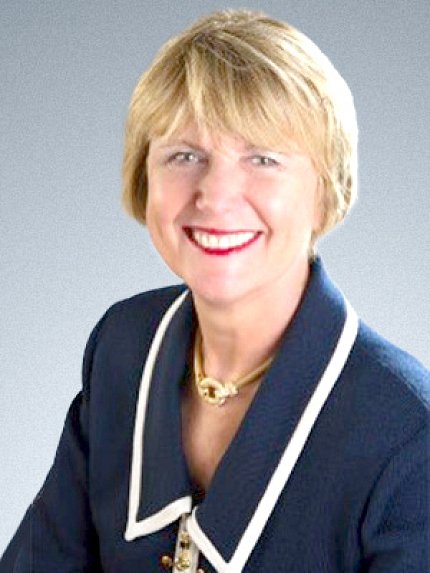Columbia’s Bakken Discusses Visualization, Health Equity

Viewers expecting scientific sonnets and iambic pentameter were inspired instead by insights into another art form—nursing research. Columbia University’s Dr. Suzanne Bakken discussed “Implications of Poetical Science for Advancing Health Equity through Information Visualization,” a recent installment in the National Library of Medicine’s Ada Lovelace Lecture Series.
“Division between art and science is artificial,” said Bakken, explaining the concept of poetical science that the series’ namesake developed to emphasize how vital intuition and imaging are in mathematics and science. “I’m using Lovelace’s word ‘intuition,’ although I am more inclined to call it ‘incredibly fast information processing.’ Three key features that we would all recognize as science are observation, interpretation and integration.”
Senior investigator Dr. David Landsman, chief of the Computational Biology Branch in the National Center for Biotechnology Information at NLM, introduced the series. He described Lovelace as the “first computer programmer.”
A daughter of the British peerage who became a visionary mathematician, she discovered that a computer, or “analytical engine,” as such devices had come to be called in those days, could follow a sequence of instructions—a program—to make complex calculations. In addition, Lovelace theorized, the devices could work with things other than numbers.

“She certainly was a very early prophet of the computer age,” Landsman said.
Lovelace, who died at age 36 in 1852, wrote the first algorithm, or series of instructions specifically designed to be followed by a machine.
Landsman said the lecture series “emphasizes NLM’s research focus on computational innovation across biomedical science as a means towards improved health and a better understanding of biology and medicine.”
Bakken, alumni professor of nursing and professor of biomedical informatics at Columbia and director of the NINR-funded Precision in Symptom Self-Management (PriSSM) Center at Columbia’s School of Nursing, had been scheduled to kick off the new series in person last March. Due to Covid safety measures, her lecture was postponed and delivered virtually.
For more than 30 years, Bakken’s research has focused on the intersection of informatics and health equity. NIMH, NCATS, NCI and NLM also have funded her work.
Bakken said that although her connection to Lovelace may not be immediately obvious—20th century American farm girl versus 19th century British nobility, nurse versus mathematician—there was much common ground between them: Both Lovelace and Bakken grew up as bookworms and both as scientists were never satisfied with their own understanding of a topic, no matter how deep that comprehension might seem.

They also shared an acute observational skill that they employed in their research, Bakken pointed out.
Lovelace once observed a Jacquard loom work and its pattern tapestry punch cards, Bakken said. The mathematician then imagined applying similar principles to a device invented by her scientific mentor and colleague, computer pioneer Charles Babbage. “She thought about the analytical machine as the weaving of algebraic equations,” Bakken said.
An NIH grantee since the mid-1990s, Bakken talked about integrating key observations from her own early career as a nurse and nursing science researcher at the University of California, San Francisco. For the last couple of decades, her studies have focused on advancing health equity in urban Latino populations through information visualization.
In her lecture, Bakken emphasized the importance of representing what nurses do in a computable manner, of using information technology as an extension of nursing practice and of involving end-users in design of tools and interventions. She realized the substantial effects within the community she served.
“It was clear that people with low health literacy and poor digital literacy—and many disparities related to what we now call ‘social determinants of health’—are able to access and use digital resources if they have sufficient training,” she said.
By the time Bakken reached Columbia and communities in New York City, she was incorporating health literacy and health communication into her research goals.
“I wanted to figure out what every advance practice nurse should know about informatics,” she said, acknowledging the ultra-ambitious goal. How could nurses integrate informatics into their practice and what kind of programs could prepare nurse scientists in interdisciplinary informatics research? “I wanted to build the best program in the world to do that.”

From lessons learned during her community-engaged research projects, Bakken listed four audiences that always should receive results and key messages: scientists, clinicians, research participants and other patients/community members, and policymakers—local, regional, state and national.
“We can’t just talk to scientists,” she noted.
Summing up, Bakken said her research has confirmed Lovelace’s idea of poetical science and “the importance of intuition and image—including metaphors and analogies—in science…Information visualization is a critical component of health-literate, culturally congruent communication. Effective visual communication can contribute to both downstream and upstream health equity interventions through reducing differences in impact of social, economic and health consequences, vulnerabilities and resources.”
You can view the full lecture at https://videocast.nih.gov/watch=40070.
